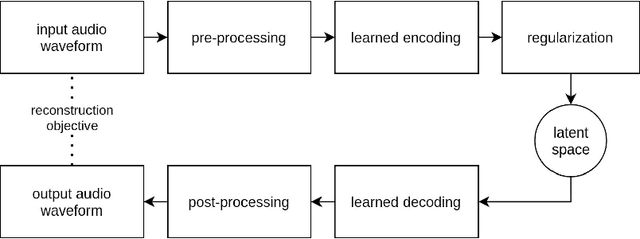Brice Gatinet
Timbre latent space: exploration and creative aspects
Aug 17, 2020


Abstract:Recent studies show the ability of unsupervised models to learn invertible audio representations using Auto-Encoders. They enable high-quality sound synthesis but a limited control since the latent spaces do not disentangle timbre properties. The emergence of disentangled representations was studied in Variational Auto-Encoders (VAEs), and has been applied to audio. Using an additional perceptual regularization can align such latent representation with the previously established multi-dimensional timbre spaces, while allowing continuous inference and synthesis. Alternatively, some specific sound attributes can be learned as control variables while unsupervised dimensions account for the remaining features. New possibilities for timbre manipulations are enabled with generative neural networks, although the exploration and the creative use of their representations remain little. The following experiments are led in cooperation with two composers and propose new creative directions to explore latent sound synthesis of musical timbres, using specifically designed interfaces (Max/MSP, Pure Data) or mappings for descriptor-based synthesis.
 Add to Chrome
Add to Chrome Add to Firefox
Add to Firefox Add to Edge
Add to Edge